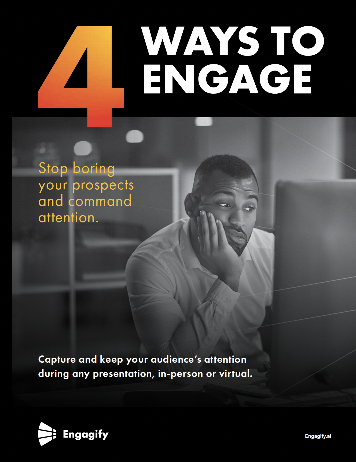In-person interaction is the best way to create meaningful relationships with prospects. That’s why trade shows and industry events are so valuable for many small businesses. But as we all know, attending trade shows costs time – and money! With so much being spent on trade shows, how can you make sure you’re getting the biggest bang for your buck? Here are five ways to improve your trade show ROI.
1. Develop a pre-show content strategy.
A stellar pre-show content strategy is the key to maximizing ROI. Generating buzz and excitement beforehand can make all the difference once you’re actually on the trade show floor. You can do this by creating content that illustrates the value of your brand and company, and the value gained by potential leads if they visit your booth.
Here are some ideas to kick-start your pre-event content marketing:
- Schedule appointments ahead of time: If you have access to an attendee list, reach out to anyone who seems like a qualified fit for your product. Provide them with a brief overview of your company or product and ask if they’d like to schedule 5 to 10 minutes of booth time.
- Promote your booth: First and foremost, tell your prospects where they can find you. Give them a booth number and provide them with a map or an identifying feature of your booth.
- Tailor content to the theme of the event: Many professional events have an overarching theme. Work this theme into your editorial calendar and create different types of content that feature this theme. Then, distribute this content to a list of event registrants.
- Leverage social media: Utilize event hashtags and specific pages to promote your event-themed content. Social media allows you to leverage any traction the event has garnered and use it to generate your own buzz.
2. Generate media coverage at the trade show.
Booth visits are the primary source of trade show lead generation—but that’s not the only way to do it. If an event is large enough, the host company will likely invite bloggers, news outlets, and industry leaders to provide press coverage. This provides attendees like you with a unique opportunity to secure big media coverage for your company and products. But, it’s important to note that you can’t just expect reporters to drop by your booth and ask for an interview!
Media outlets complete their event schedule months in advance, so you must attract their attention early to truly capitalize on the publicity they offer. A good way to do this is by obtaining a media list, then scheduling interviews and demos ahead of time. That way, you can be certain that you’ll have some coverage going into the trade show.
3. Optimize your trade show booth.
We all know how important it is for your booth to stand out if you plan to attract new visitors and prospects! But remember, your ultimate goal is to convert prospects into customers. Trade show attendees may flock to booths with eye-grabbing, gimmicky designs, but you’ll only boost your ROI if you offer something of substance.
Follow these steps to get attendees to your booth – and convert them into leads before they leave.
- Emphasize your products: visitors should leave with a clear idea of what you offer, why they need it, and a next step or call to action.
- Use giveaways to boost conversions and excitement: giveaways and contests are a fun way to engage your audience during a show.
- Make sure your booth is eye-catching but organized: after all, your booth is the star of the show!
4. Remember to follow-up post-trade show.
Assuming you did well at your booth, attendees should already be looking forward to your calls. If that’s the case, you accomplished your primary goal – promoting your product and forming a relationship with prospects. But, it’s important to put just as much thought and effort into your follow-up strategy. Consider taking these steps to improve your trade show ROI:
- Follow up promptly.
- Remind them of your booth and your brand.
- Personalize your emails.
5. Post-show analysis.
Now that the show is over and you’ve calculated your ROI, you may still have questions regarding the value of trade shows and industry events.
Start by comparing your ROI from this trade show to your average event ROI. Did you perform better or worse? Also, see how the number stacks up to your average marketing campaign ROI. If you find that your ROI at your latest trade show was lower than average, examine your methods and see what you can tweak to improve your performance.




